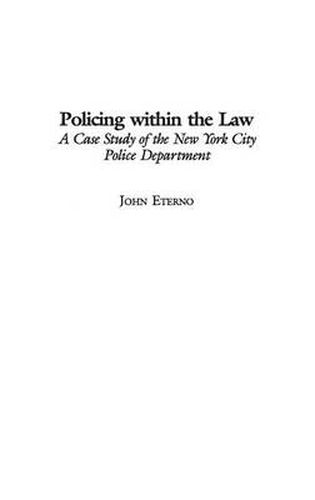Readings Newsletter
Become a Readings Member to make your shopping experience even easier.
Sign in or sign up for free!
You’re not far away from qualifying for FREE standard shipping within Australia
You’ve qualified for FREE standard shipping within Australia
The cart is loading…






At a time when police abuses and errors make the headlines, it is important to understand just what goes into the decisions that police make when they are confronted with various crime scenarios in the line of duty. Required to respond within the law, many officers are able to respond in a legal manner to crime situations in which court decisions are written clearly and with easily applied guidelines. But what happens when those decisions and laws are written in a way that invites interpretation and varies from situation to situation? Based on a case study of New York City police officers, this important volume analyzes how officers contend with often-ambiguous laws in the face of specific crime scenarios. In addition, the author explores other influences on police decision making, including officer characteristics and attitudes, and makes policy recommendations in an effort to encourage the reinforcement of legal guidelines so that the rights of individuals are appropriately balanced with the duty to control crime.
Based on a survey of nearly 1,300 officers’ responses to specially designed hypothetical crime scenarios, this study illustrates how police officers are likely to react with regard to the law in these situations. While officers tend to act legally where the laws are clear, less clearly articulated laws leave the police with a variety of different options for action in ambiguous situations. For instance, in weapons scenarios, the survey showed that officers would often take advantage of ambiguity in the law with regard to how they may respond. In drug scenarios, officers will increase their tendency to do a search if the situation is slightly ambiguous, though they will decrease their search responses when the situation appears to be highly ambiguous. Eterno carefully examines the various responses and the laws that are meant to guide what police may or may not do in given situations, concluding that better laws and bright-line rules will help to check and balance the need to fight crime aggressively while preventing the abuse of authority that may arise in questionable circumstances.
$9.00 standard shipping within Australia
FREE standard shipping within Australia for orders over $100.00
Express & International shipping calculated at checkout
At a time when police abuses and errors make the headlines, it is important to understand just what goes into the decisions that police make when they are confronted with various crime scenarios in the line of duty. Required to respond within the law, many officers are able to respond in a legal manner to crime situations in which court decisions are written clearly and with easily applied guidelines. But what happens when those decisions and laws are written in a way that invites interpretation and varies from situation to situation? Based on a case study of New York City police officers, this important volume analyzes how officers contend with often-ambiguous laws in the face of specific crime scenarios. In addition, the author explores other influences on police decision making, including officer characteristics and attitudes, and makes policy recommendations in an effort to encourage the reinforcement of legal guidelines so that the rights of individuals are appropriately balanced with the duty to control crime.
Based on a survey of nearly 1,300 officers’ responses to specially designed hypothetical crime scenarios, this study illustrates how police officers are likely to react with regard to the law in these situations. While officers tend to act legally where the laws are clear, less clearly articulated laws leave the police with a variety of different options for action in ambiguous situations. For instance, in weapons scenarios, the survey showed that officers would often take advantage of ambiguity in the law with regard to how they may respond. In drug scenarios, officers will increase their tendency to do a search if the situation is slightly ambiguous, though they will decrease their search responses when the situation appears to be highly ambiguous. Eterno carefully examines the various responses and the laws that are meant to guide what police may or may not do in given situations, concluding that better laws and bright-line rules will help to check and balance the need to fight crime aggressively while preventing the abuse of authority that may arise in questionable circumstances.